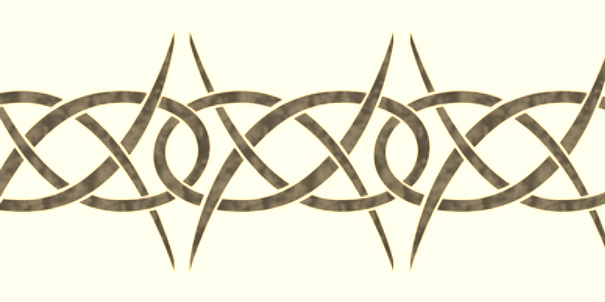2 B Continued...
Continuous Melodic Minor ii-V7-i
3 Scale Exercise
1) Because Melodic Minor has no "avoid" notes, one can start and resolve the ii-V7-i cadence on each and any scale degree.
2) To smoothly connect, by whole or half step, from one scale to the next, moving in the same ascending or descending direction.
3) Most importantly, to help train the ear to the sound of Melodic Minor in general and to the sound of this type of polymodal ii-V7-i in particular, as well as to build instrumental technique.
skip up - step up - skip down - step up - skip up - step up - skip down
D - F - G - E - F - Ab - Bb - G
These notes spell out the F Melodic Minor scale (with the exception of the note C) over the D-7b5 (ii chord) which is built from the 6th scale step of the "key" of F Melodic Minor, in the first measure of line one of the exercise.
In measure #2, starting on the next available scale tone from the next scale (Ab Melodic Minor), we use the same diatonic scheme:
skip up - step up - skip down - step up - skip up - step up - skip down
Ab - B - Db - Bb - B - Eb - F - Db
These notes spell out the Ab Melodic Minor scale (with the exception of the note G) over the G7alt (V7 chord) which is built from the 7th scale step of the "key" of Ab Melodic Minor..
In measures #3 and 4, starting on the next available scale tone from the next scale (C Melodic Minor), we continue with the same diatonic scheme:
skip up - step up - skip down - step up - skip up - step up - skip down
D - F - G - Eb - F - A - B - G
A - C - D - B - C - A ---------------------------------
These notes spell out the C Melodic Minor scale over the C min. tonic (i chord) which is built from the 1st scale step of the "key" of C Melodic Minor.
The breakdown:
ii = D-7b5 = 6th scale step of F Melodic Minor
V7 = G7alt = 7th scale step of Ab Melodic Minor
i = C- = 1st scale step of C Melodic Minor
Shortcuts to memorization:
ii chord = 6th scale step of
V7 chord = 7th scale step of
i chord = !st Scale Step of
For example, if your trying to quickly determine the Melodic minor scales to use over a ii-V7-i in G minor, you could easily figure the ii of G minor is A-7b5, the V7 of G minor would be D7alt and the i chord in G minor would be, of course, G min.
The magic numbers above are 6, 7 & 1 as relates to the scale steps from which these three chords are derived; so to find the Melodic Minor scales to match the three chords of an A-7b5 / D7alt / C- ii-V7-i cadence:
A-7b5 is derived from the 6th scale step of C Melodic Minor.
D7alt is derived from the 7th scale step of Eb Melodic Minor.
G- is derived from the 1st scale step of.................................... G Melodic Minor.
I smell smoke! Is that your brain frying or mine?
OK. So now that we've gone through the preliminaries, there is an easier way to find these scales.
Whew!!
Taking the just witnessed key of G Melodic Minor as an example:
The scale for the ii chord begins on C
The scale for the V7 chord begins on Eb
The scale for the i chord begins on G
Those scale roots spell out C - Eb - G, a C minor triad, where the home key in question (G min.) is the 5th!
However, this has absolutely nothing to do with the key C min, it's just a trick shortcut to determine the Melodic Minor scales in a G minor ii-V7.
Let's take the key of Bb (Maj. or min.).
Consider Bb as the 5th. The root would be Eb, the min. 3rd would be Gb. The 5th would be Bb.
So in the key of Bb (Maj. or min.);
The Melodic Minor scale for the ii chord (C-7b5) = Eb Melodic Minor
The Melodic Minor scale for the iV7 chord (F7alt) = Gb (F#) Melodic Minor
The Melodic Minor scale for the tonic i (I) chord (Bb-) = Bb Melodic Minor
Eb - Gb - Bb, spells a Eb min. triad. The roots of the Melodic Minor scales in a ii-V7-i in Bb, and nothing to do with Eb, only a name.
Just think of the key in question as being the 5th of a minor triad.
How about the Melodic Minor scales for ii-V7s in the keys of:
D min; B min, F#min Ab min.
Easy as A-B-C.....if you just put the time into it!


 RSS Feed
RSS Feed









